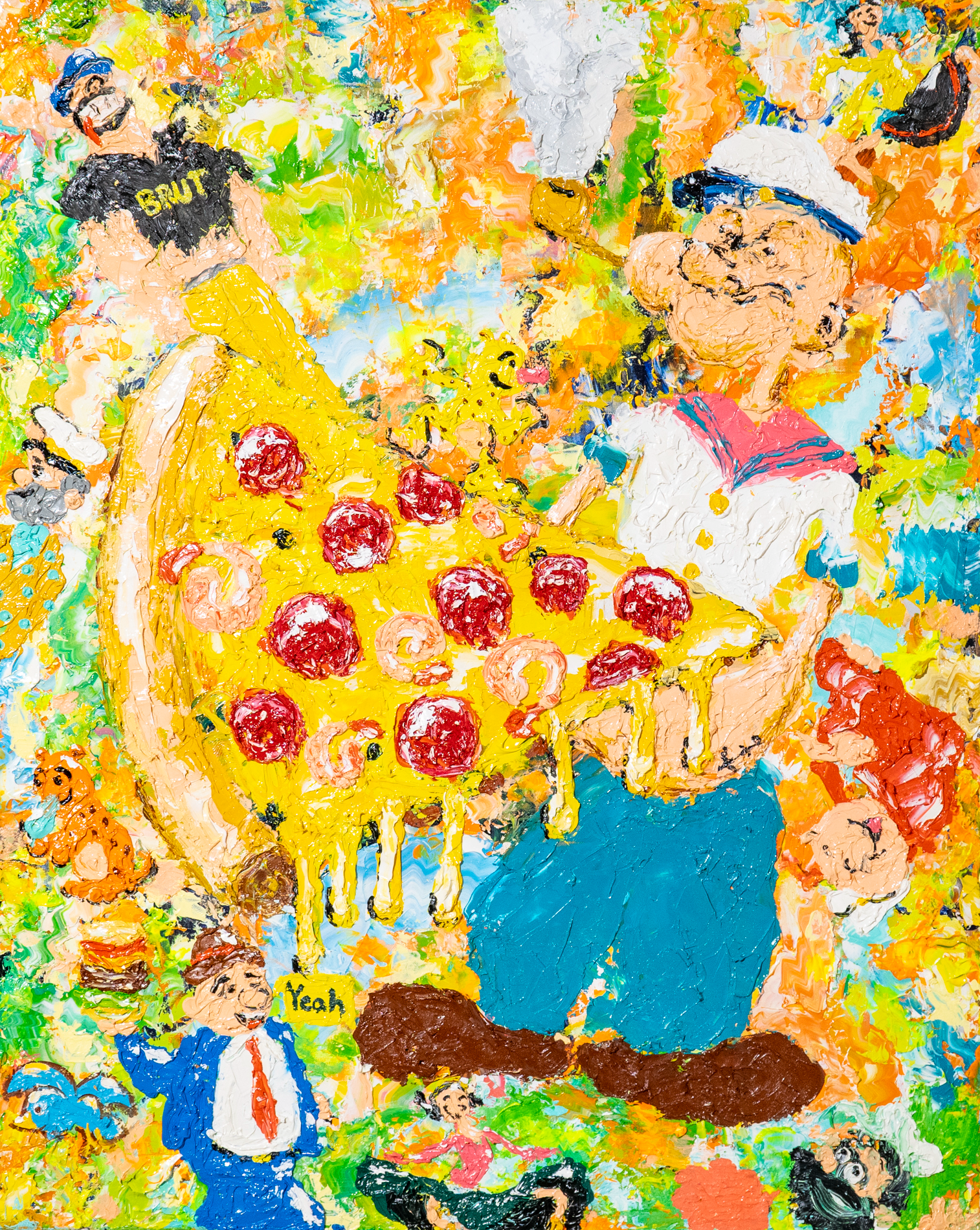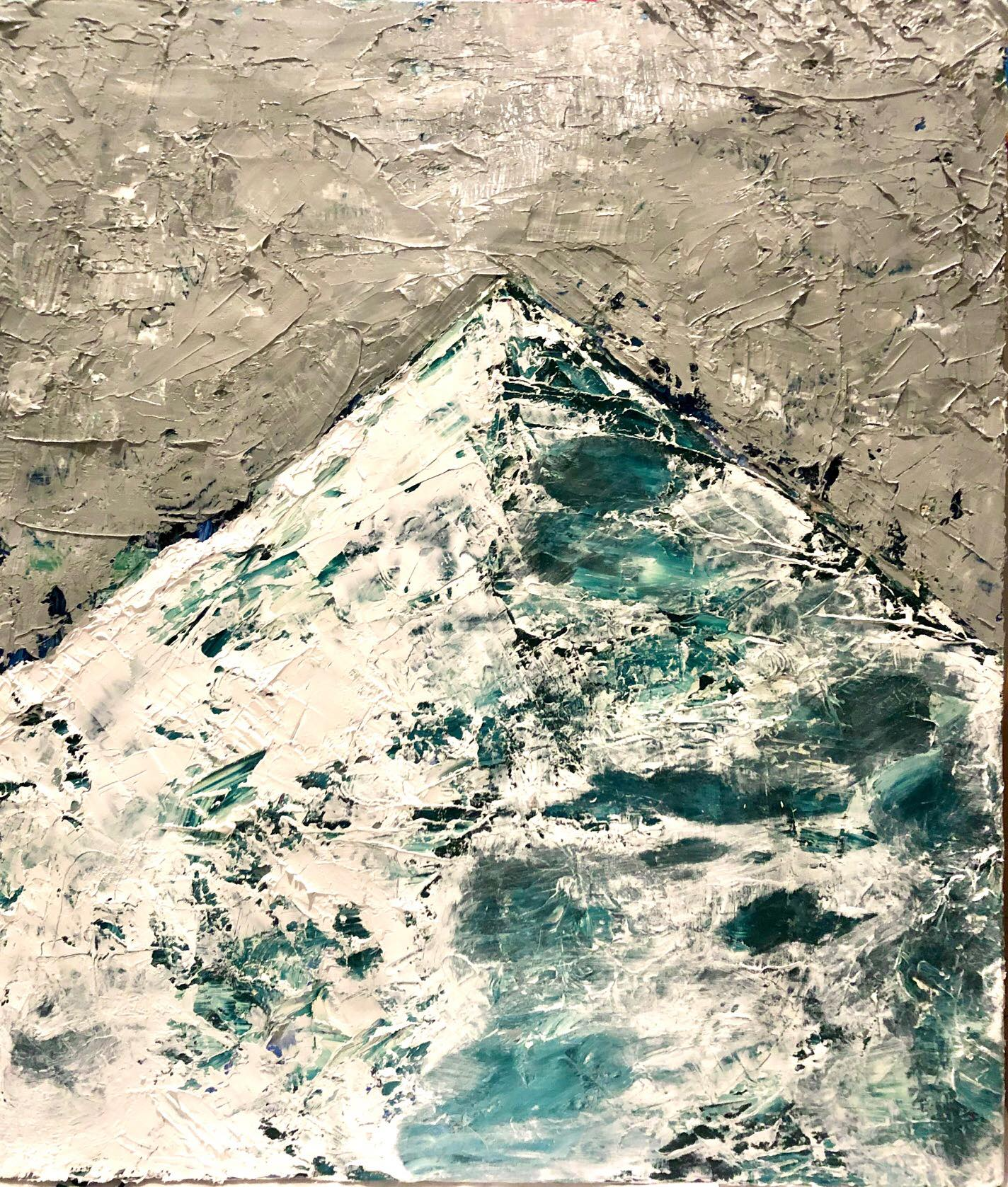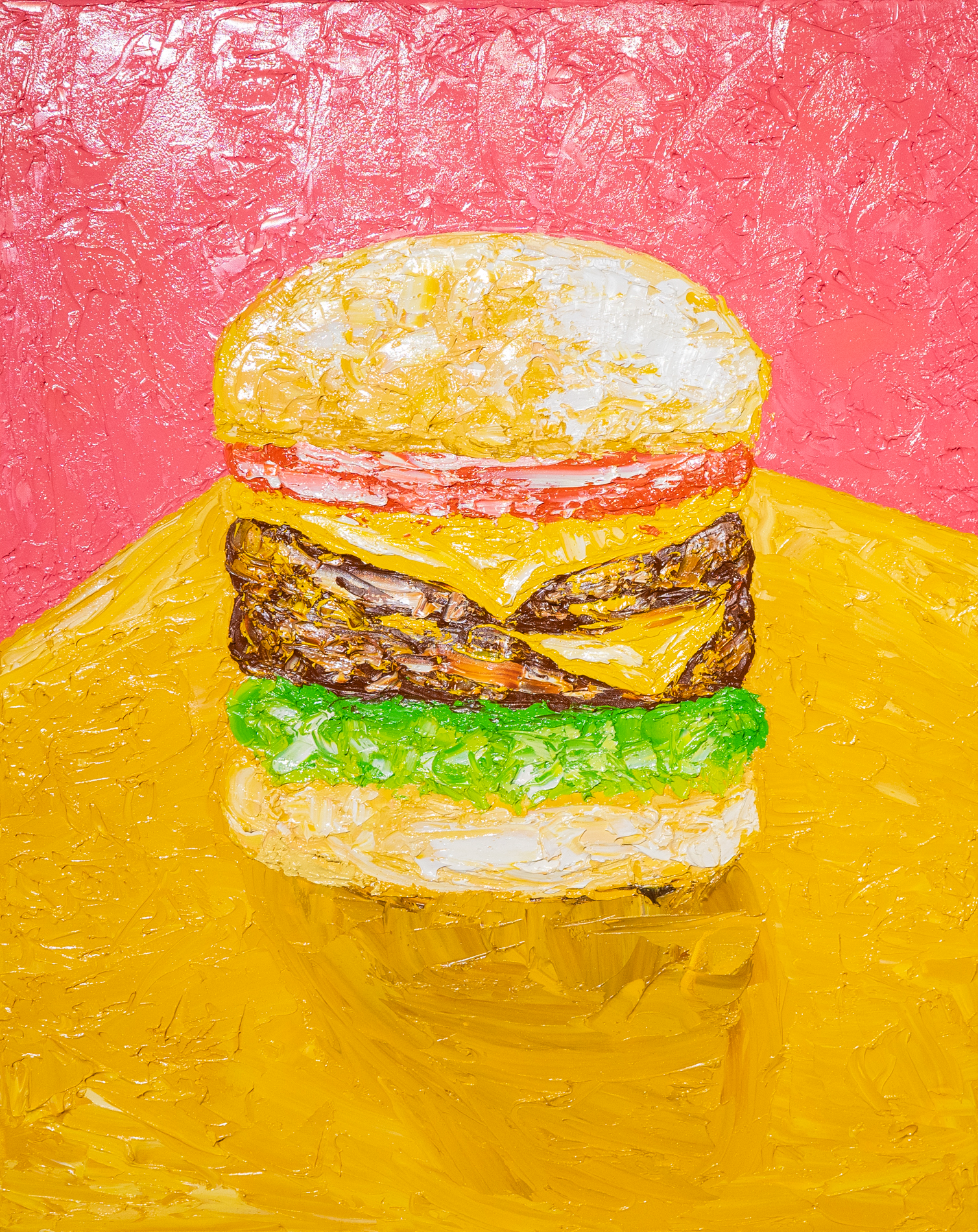Oil paints and painting knife for the first time in 20 years
Goro Nagashima, a popular illustrator who has worked on the covers of magazines such as "POPEYE" and FM NACK5's free paper "AIR SCHEDULE", as well as books and advertisements, will be working on oil paintings for the first time in 20 years at this exhibition. The works he will be painting are of hamburgers and hot dogs. Approximately 20 new works will be on display, reminiscent of the 1980s American West Coast culture that influenced him, including cartoon characters.
Nagashima, born in Tokyo in 1973, has been familiar with art since he was a child, influenced by his father, an art teacher. As an elementary school student, he would enjoy making 50 wrestling moves out of paper clay as a summer vacation project, but he says his first experience with art was almost traumatic. He felt that the Japanese art that his father took him to see, especially the Showa era works, had a "dark atmosphere, reminiscent of war education."
Although he found art inaccessible, after his mother handed him a collection of Ohtake Shinro's art, he decided to go to Musashino Art University Junior College and study oil painting. From that time on, he realized that his style of painting had an unintentional dark tone, and his works were so dark that viewers would comment that his portraits looked like sick people. He says that this original experience is the influence behind the certain eeriness that lurks in the fragmented scenes he loved, such as American movies, junk food, used clothing, and heavy metal. And this is expressed as a longing for America, where postwar complexes had settled.
Fragments of personal memories and layering of emotions
What if, even in this extremely unreasonable world, life continues unchanged, and one were to apply thick layers of oil paint to pile up the emotions one cannot fully digest? The title of the exhibition is "Thick Layer."
Nagashima has been creating artworks using acrylic, watercolor and pencil with the craftsmanship and ethics of an illustrator. He came to the realization that he wanted to create artworks that were not for someone else, but that were layered with layers of organic emotion, depicting the global emergencies that occurred one after another and his own way of life that continues to progress bit by bit.
"Recently, I've become good at plaster drawing, and I find it interesting. Many people who study art have bad memories of plaster drawing and give up, but I wanted to try it again after a long time... I realized that what I learned academically has supported me not only as an illustrator, but also as my own realistic expression." He reexamines the possibilities of oil paints, which he learned as a student but avoided as "troublesome," and his own expression.
"When I was a child, I would smear paint straight out of the tube, or I would use too much glue in art class, where we would glue pieces of paper together, and I would get told off by my teacher all the time (laughs)," he says. It could be said that Nagashima's early impulse was to use a variety of art materials and paint thickly. While working as an illustrator for over 20 years, he has always had a sidelong glance at the world of painting, which is different from illustration. Nagashima's nostalgia for oil paintings now approaches.
Svetlana Boym, a Russian-American scholar of comparative literature, divides nostalgia into "restorative nostalgia," referring to homesickness, and "reflective nostalgia," referring to personal cultural memories. The former refers to a return to authoritative sources such as the state or religion, while the latter refers to individuals' feelings and actions of appreciating the details, questioning authority and attempting to grasp the past in its various possibilities. Nagashima's work, which is layered with longing and complexes for objects, can be seen as a reflective nostalgia, while also being a fetishistic expression found in Japanese magazines and subcultures that admire sneaker numbers and the details of jeans.
In his “mountain” series, which begins with the work “Ya-hoo Mountains” that he exhibited in his solo exhibition at Little More Gallery in 2011, Nagashima focuses on the mountains as seen from the train window as “a triangle within a square frame,” praising the mountains not as sacred places but as numerous fragments and viewing them as fluctuating entities.
The depth of living in an imperfect world
Nagashima says that as he layered colors with oil paints and a painting knife for the first time in a long time, "I felt like a new door was opening." He wants to try "doing something silly as much as I can," such as painting a hamburger, which he has painted many times in the past, in size 30. He will also paint something that lies between the concrete motif and the abstract, which deviates from that, and attempt to express a transformation in meaning.
Nagashima's reflective nostalgia confirms that the world is in the process of becoming and changing. Layering colors is how we live in an imperfect world, and the thickness of the colors represents the depth of being alive.







